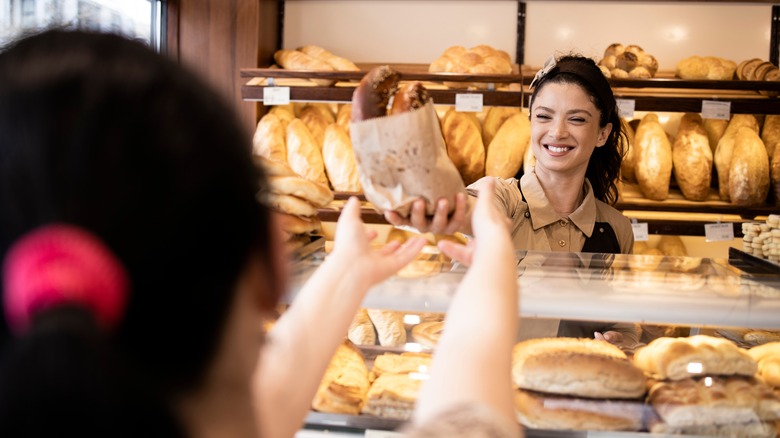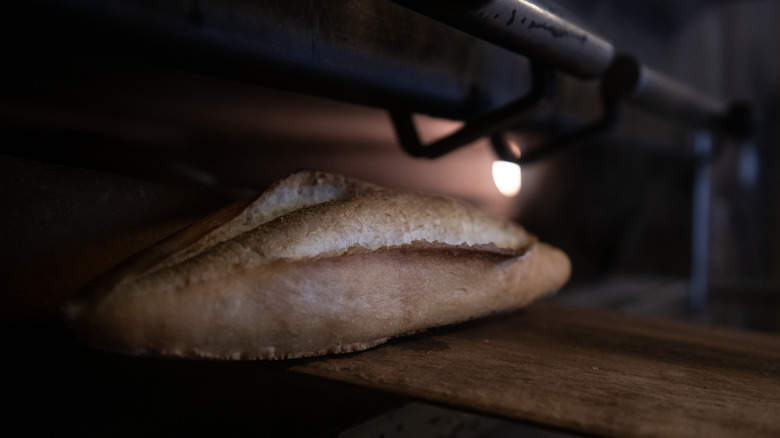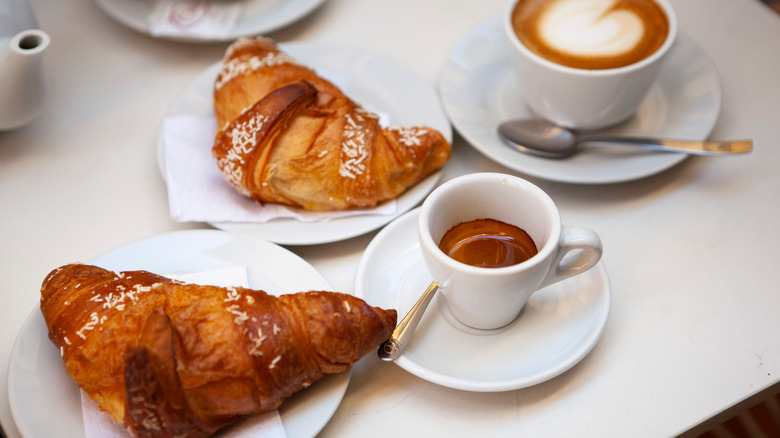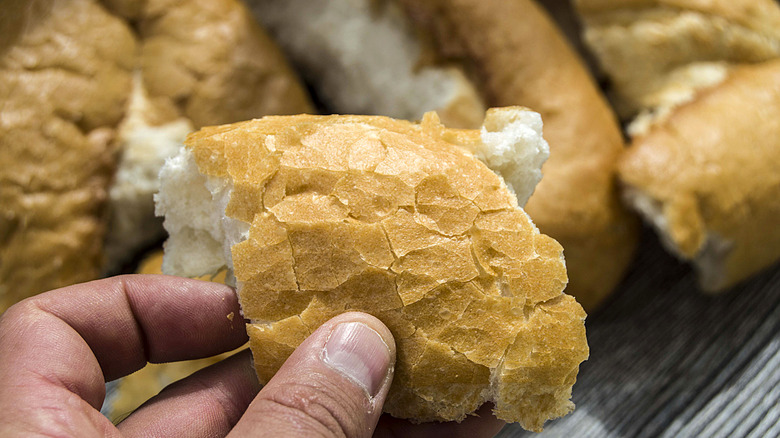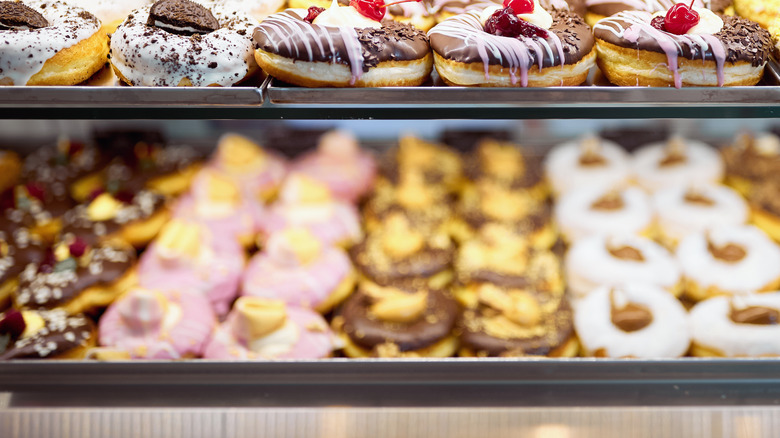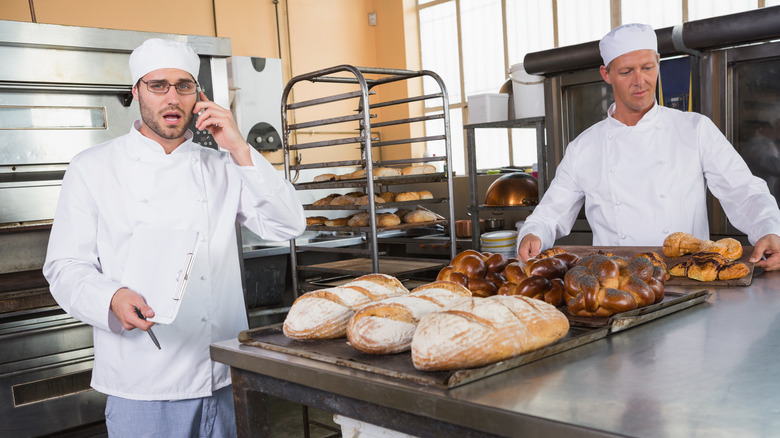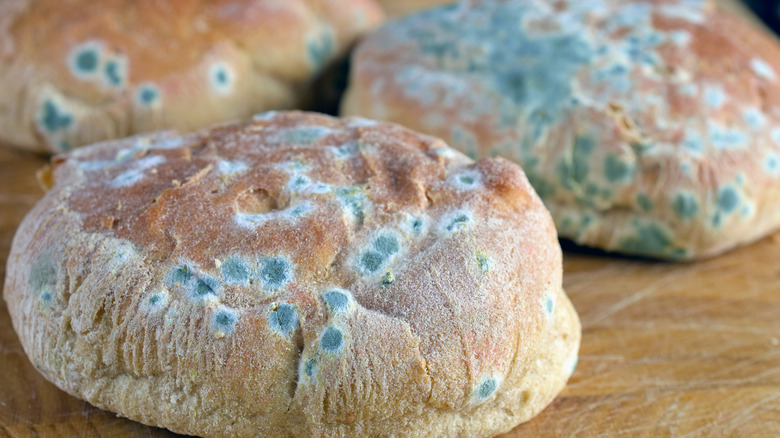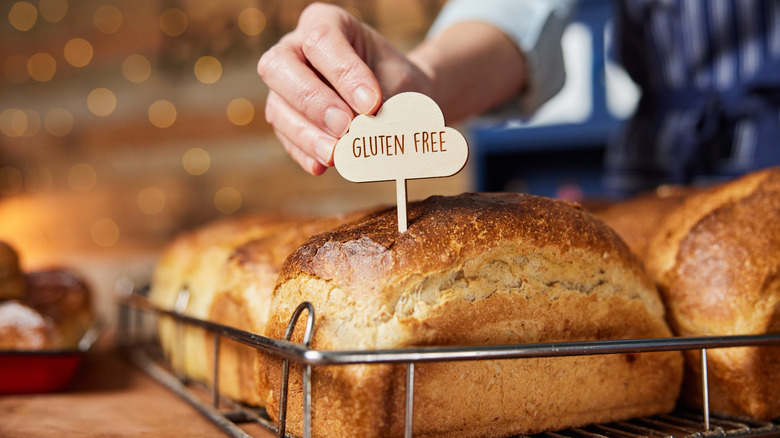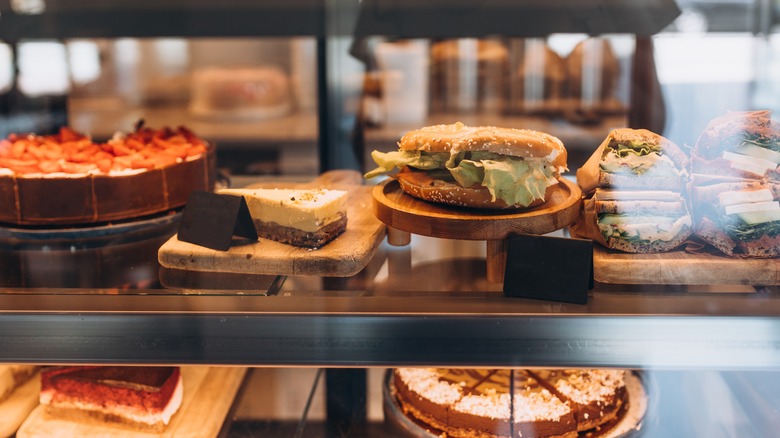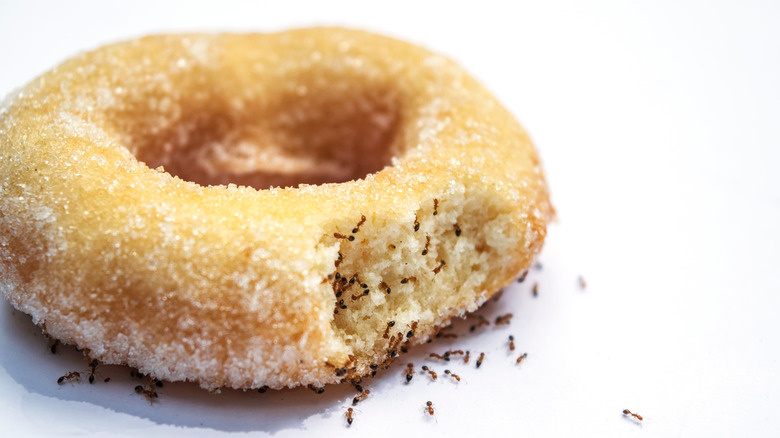15 Red Flags That Might Indicate A Bad Bakery
Bakeries are a symbol of community and culture in many places around the world. Besides purchasing chocolate croissants, donuts, and fresh-based ciabatta loaves, bakeries allow people to come together and purchase cultural foods they may not be able to make at home. Some bakeries also offer gathering spaces for community members to enjoy their purchases over good conversation and coffee.
Despite the world of opportunities opened by clean, well-run, and community-designed bakeries, there is always a flip side of the coin. Some bakeries can give off immediate red flags the second you walk through the door and before you place your order. If you choose to ignore these signs, there is a chance that you will be dissatisfied with your order and overall experience at your bakery. If you want to avoid a bad experience, you need to keep your ears, eyes, and nose out to detect some of these major red flags in your local bakery.
The bakery smells like anything but baked goods
When you walk into a bakery for the first time, you should be greeted by warm and inviting smells. According to Sensory Value, the bakery's aromas contribute to many olfactory sensations that bring back memories or connections to prior experiences. For example, you might smell baking bread and be transported back to the memories of going to a bakery as a child with your family. These smells not only create visceral experiences but also help encourage you to buy more things from the bakery. How convenient!
If you walk into a bakery and are greeted with rancid odors or the smell of bleach cleaning products, you should turn around and leave. But there may be some logical reasons why your bakery doesn't smell like yeast. For example, it could be because there was a spill before you walked in or because the smell dissipated after the bakery stopped running its ovens early in the morning.
The concept-specific selection of items is limited
What should you expect to see if you walk into a French bakery? Croissants? Eclairs? If you go to an Italian bakery, you would expect to see cases full of Italian cookies and freshly baked focaccia loaves. But if you see a small amount of region-specific desserts, you're likely at the wrong bakery. Moreover, if you're going to a bread bakery for its bread, you would hope it makes really good bread.
More variety in a bakery menu may indicate that the bakery can make a lot of baked goods but can only make a few baked goods well. If you're comparing baked goods across bakeries, you should stick to trying a few staple treats that bakeries are likely to offer. For example, most bakeries offer brownies, chocolate chip cookies, and some sort of crusty bread. You can evaluate baked goods across bakeries if you stick to the standard offerings. But we won't tell anyone if you order a bakery specialty, too.
There are crumbs everywhere
One of the easiest and most professional things bakeries can do to impress their customers is to keep their bakery cases neat and clean. Since most baked goods crumble all over the case, countertops, and tables, keeping up with crumbs can be a big challenge. But, since no one wants to sit in a chair covered in croissant flakes and a table covered in brownie pieces, regularly cleaning up crumbs should be an expectation for all bakeries.
Besides the practicality of cleaning up crumbs, bakeries should run a rag in the bakery cases to trap dust and food particulates that have settled over time. This gives the impression that the bakery is clean and committed to safety — which is also a marketing advantage for the bakery. Bakeries should also regularly clean shared handles and surfaces to prevent cross-contamination and illness, (via the Escoffier School of Culinary Education).
The baked goods have started to wrinkle
Duff Goldman, star of "Ace of Cakes," claims that one of the telltale signs of a bad bakery is wrinkles on the surface of bread and cake. As food ages and moisture evaporates from the baked food, the exterior crust starts to sink down and form a wrinkled crust, (via Busby's Bakery). If you go to a bakery at the end of the day, you shouldn't expect to see wrinkles from baked goods made that morning. Instead, only cakes and bread that have been sitting out for several days will start to show signs of diminished quality.
If you are looking for stale ingredients on purpose — such as for a bread pudding or croutons — you can always check in with your local bakery at the end of the day. Some shops will have discounts available if you purchase bread that cannot be saved until the next day — it might also mean that you get a loaf of bread for free.
The bakery has poor reviews online
Online review websites, including Yelp and Facebook, should always be taken with a grain of salt. Is it a competitor restaurant purposefully writing negative reviews to discourage other businesses? Or did a business ask people to write positive reviews in exchange for discounts or free products? It's hard to know from a single landing page.
When examining a business's reviews, you should look at the whole picture rather than just a single reviewer's comment. If there seems to be only negative feedback about a bakery, that can indicate that customers are genuinely dissatisfied with their experience. Pictures can also provide a lot of weight to your perspective on a bakery. Are there pictures of ants crawling on the floor or moldy pastries in the bakery case? These are red flags that you need to consider when you're doing your research on what bakery to stop by next.
The staff can't describe the baked goods correctly
A great bakery has some staff who are at least somewhat knowledgeable about the pastries, bread, and baked goods they sell. Not only does this mean that staff should be able to identify a particular pastry, but it should also include some description of how it is made. The bakery's goal should be to sell you food — the staff should be there to make the process easier for the customer. And while the front-of-house staff may be different from the people making the pastry, they should have enough customer-facing knowledge to describe the products effectively.
One of the signs of an excellent bakery is a staff who can recommend pastries and foods to customers based on their personal palates. Nothing is worse than asking a staff member what cookie they'd recommend and getting an indifferent response like "I dunno." It makes you wonder if they've even tried the products they're selling.
Tables aren't being cleaned after use
Some bakeries offer complimentary wireless internet and spaces for customers to do work. But if you go to sit down at a table and find crumbs everywhere and pecan sticky bun residue on the table, you probably won't stick around long. Staff should be diligent about cleaning spaces in the bakery — especially commonly touched surfaces like doorknobs, bathrooms, tables, and condiment stations — during service. The Specialists recommend asking yourself, "Do I feel comfortable using the restroom here — and if not, why would I consider ordering food from here?"
You can do your part in helping keep shared spaces at bakeries clean by cleaning up after yourself. If you use a table at a self-service restaurant, place all your used dishes in the appropriate bins on your way out. You should also alert the staff to spills or dirty restrooms so any issue can be ameliorated quickly.
The menu doesn't match what's in the case
If you're going to a restaurant for the first time, you usually check the menu before you go. So why should it be any different than a bakery?
A good bakery should have an active online presence — which can mean either social media or a well-designed website. You should be able to easily see the bakery menu, or at least what the bakery regularly offers in stock. An outdated website, such as one with incorrect hours or contact details, may also be a red flag. If you go to the bakery and none of the food in the case matches what you expected, you should be disappointed. However, there are some mitigating factors in this, including the availability of ingredients (considering soaring egg prices) and the time you visit the bakery — since many places will sell out of popular items around mid-day.
The staff is hostile and uncooperative
Everyone wants a comforting, welcoming experience when they walk into a bakery. Unfortunately, a hostile, angry, or bickering staff is anything but welcoming — and may contribute to you wanting to leave the bakery as soon as you walk in. Listening to staff members share intimate details about their personal lives or hearing disgruntled employees complain about working at an establishment can make you feel deeply uncomfortable — and may even warrant a conversation with senior management.
Aloof staff give the impression that they do not care about your experience at the bakery, nor want you to return to the business. This can also signify more significant issues in the workplace, including poor training procedures, toxic working culture, and poor management. Regardless of why you're being treated poorly (as a paying customer, no less), you should be able to leave the bakery at any time and take your business elsewhere.
The bread is stale or moldy
If you're buying baked goods from a bakery, you should always inspect the products before handing over any cash. If you notice signs of spoilage on any of the food in the case, including visible mold or damp spots, you should avoid ordering any products from the bakery. According to the United States Department of Agriculture, some molds can release mycotoxins that can make you sick or cause intestinal discomfort. In addition, the website notes that molds grow best in warm, humid environments, which can be the case with warm ovens spewing heat in a bakery.
If there is a single loaf of moldy bread in the bakery case, are all the other goods safe to eat? Per the Cleveland Clinic, not necessarily. There is no way to know if the mold spores present in the case are harmful to human health. Since these spores are airborne, they might have already contaminated other foods in the case.
There isn't a dedicated space for gluten-free items
Going to a bakery can be a scary experience for someone who is gluten intolerant, has a gluten allergy, or has Celiac disease. Cross-contact is the process by which gluten and gluten-free food are intermingled; this can occur through pastries sharing the same bakery case, cutting gluten-free bagels on the same surface as wheat bagels, or handling both gluten and gluten-free foods interchangeably with unwashed hands, (via Beyond Celiac).
A knowledgeable bakery will have a separate space and equipment for folks with gluten intolerances. However, for many bakeries, it isn't easy to completely eliminate the possibility of cross-contact since the flour is often airborne when a batter is mixed or on the oven's surface as the food bakes. Businesses must also correctly train staff on how to prepare, handle, and sanitize equipment to ensure that the food is safe for folks with gluten-free diets.
Suppose you walk into a restaurant that houses its gluten-free and gluten-based foods together or one without a dedicated allergy policy and management plan. In that case, you're better off going to an entirely gluten-free bakery to minimize the chance of cross-contact.
The bakery is empty
There are times in the day when you should expect the bakery crowd to be less than anticipated. If you're stopping in well after the lunch crowd has left, seeing a few, or no, customers aren't surprising. But on a weekend morning, you should expect to see a good bakery filled with customers packed like sardines to get their pick of the croissants.
A bakery with few customers can indicate that the shop is not up to the community's standards. There are also bigger psychosocial reasons why people tend to go to crowded restaurants. According to Fast Company, people tend to favor crowded restaurants over empty ones because it gives the impression that going to that restaurant is a good choice — because other people went there too. Other people were satisfied by an experience at a bakery, so you should be too. As the saying goes, there's power in numbers.
It's late in the day, and the case is still filled
A full bakery case is akin to an empty restaurant. You might ask yourself, "What is so wrong with the food here that no one is buying it?" There are some logical explanations for this phenomenon — including that the bakery is just starting and still trying to find out the supply-and-demand dynamics of the store. While some math is involved with determining how much food to put out, public events, poor weather, and competitor establishments may result in too many baked goods being left at the end of the day.
There are many things that bakeries can do with leftovers, per Top Food Info. Some food can be frozen and saved for later, like unfrosted cupcakes. Leftover cakes can be ground up into cake pops, while stale bread can be used for bread puddings or baked into chips. If the food can't be repurposed for a profit, it is often discarded or donated to charitable organizations and food pantries.
The bakery case is covered in fingerprints
If children are running around in a bakery, it is likely a sign that there will be fingerprints all over the bakery case. While children aching for colorful cupcakes or unsuspecting adults pointing at the most appetizing tart in the case are typical for a bakery, staff who fail to clean the bakery case's exterior properly should be an immediate red flag. A clean case signifies that a bakery is professional, committed to cleaning procedures, and takes pride in its appearance.
Memorabilia Displays notes dusting the case at regular intervals, such as every other week, can help prevent dust and debris buildup. Glass display cases should be cleaned regularly with an ammonia-based cleaner (like Windex) and a microfiber cloth to remove fingerprints and gunk. During a busy service, cleaning the display cases may not be the bakery employees' top priority, but the cases should still be cleaned regularly to ensure cleanliness.
There are obvious signs of pest infestation
Pest management is a crucial component of properly managing a food service establishment. Ants, mice, and cockroaches can feast on fallen pieces of bread or open bags of flour in the storage section of the bakery, but how often do you see pests in the front part of the bakery? Rarely will you see pests while the bakery is open, but you may see signs that a bakery has a pest problem. According to ABC Exterminating, you should alert staff immediately if you see pieces of round or cylindrical excrement in the corners or torn nesting material along the edges of the bakery. This can indicate the start of a pest problem, which needs to be squashed before it progresses to the point of customers seeing the pests moving around during service hours.
You might also notice ants on the floor of a bakery. Rentokil notes that ants are attracted to sugar and water found in bakeries. Seeing ants may indicate that the bakery staff is not up-to-par on sanitation procedures or regularly cleaning surfaces where sugar and water residue is present, such as countertops or bakery cases.
